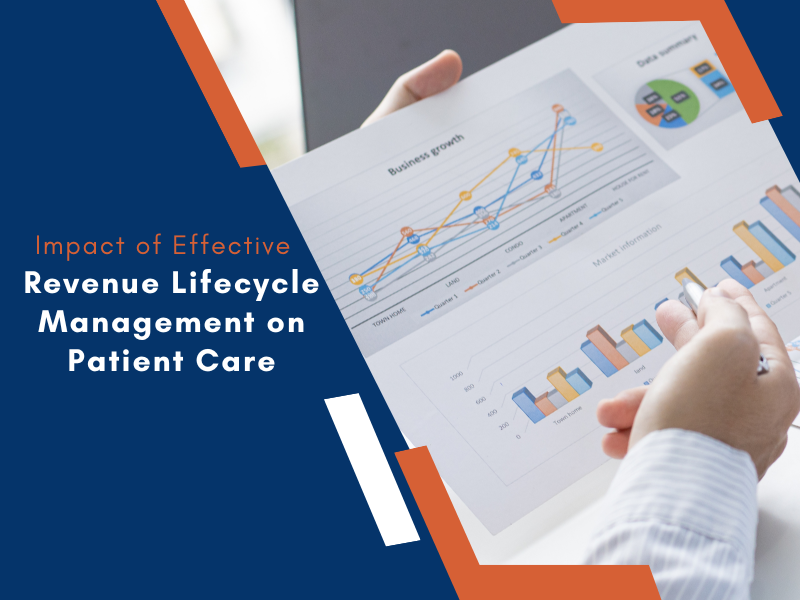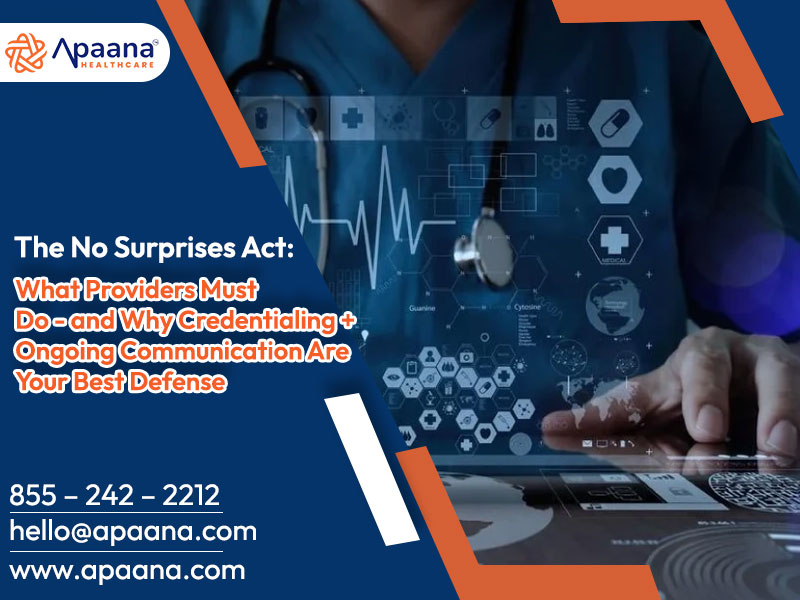In today’s healthcare landscape, the connection between effective revenue lifecycle management and quality patient care is undeniable. Revenue lifecycle management (RLM) is more than a financial tool—it is a pivotal element that influences the overall functioning of healthcare organizations. By streamlining administrative processes, optimizing reimbursements, and reducing financial uncertainties, RLM ensures that healthcare providers can focus on their primary goal: delivering exceptional patient care.
This blog explores how effective revenue lifecycle management impacts patient outcomes, operational efficiency, and the financial stability of healthcare organizations, ultimately leading to better care delivery.
Understanding Revenue Lifecycle Management
Revenue lifecycle management encompasses the end-to-end financial processes in healthcare organizations, from patient registration to final payment collection. It includes functions like:
- Patient Scheduling and Registration: Collecting accurate patient information.
- Insurance Verification: Ensuring coverage for procedures.
- Medical Coding and Billing: Preparing and submitting claims accurately.
- Claims Management: Tracking and resolving denied claims.
- Payment Processing: Collecting payments from patients and insurers.
Effective RLM ensures that every step in this lifecycle operates smoothly, minimizing errors, delays, and financial losses.
The Role of Revenue Lifecycle Management in Patient Care
1. Streamlined Administrative Processes
Efficient RLM reduces the administrative burden on healthcare staff. By automating processes such as insurance verification and claims submission, providers can save time and allocate resources to patient care.
- Example: When patients experience seamless scheduling and shorter wait times, they perceive the facility as organized and patient-focused, enhancing satisfaction.
2. Reduced Financial Stress on Patients
Transparent billing systems enabled by effective RLM provide patients with a clear understanding of their financial responsibilities. This fosters trust and ensures that patients are less likely to defer care due to cost concerns.
- Impact on Patient Care: Patients are more likely to seek preventive and timely treatments when financial barriers are minimized.
3. Enhanced Focus on Quality Care
When healthcare providers have reliable revenue streams, they can invest in advanced medical equipment, hire skilled professionals, and expand their services. This creates a robust infrastructure for delivering high-quality care.
4. Improved Access to Care
Efficient revenue lifecycle management ensures that facilities remain financially sustainable. Financial stability allows providers to cater to underserved populations and expand care offerings to meet diverse community needs.
Key Benefits of Effective Revenue Lifecycle Management
1. Financial Stability for Healthcare Providers
A well-managed revenue lifecycle reduces instances of denied claims and revenue leaks. This financial stability helps providers reinvest in better facilities, staff training, and patient care services.
- Example: Hospitals with steady cash flow can afford to maintain state-of-the-art emergency rooms and specialized units.
2. Reduced Errors in Billing and Claims
Mistakes in billing or coding can lead to claim denials, resulting in revenue loss and patient dissatisfaction. An efficient RLM system reduces these errors, ensuring timely reimbursements and smoother patient experiences.
- Impact on Patients: Fewer billing disputes mean less stress and quicker resolution of financial matters.
3. Faster Turnaround Times for Payments
By optimizing claims processing and payment collections, healthcare providers can reduce delays in receiving reimbursements. This financial agility enables providers to manage their operational costs effectively.
4. Better Resource Allocation
Effective RLM allows healthcare administrators to allocate resources efficiently. Staff can focus on patient care rather than spending excessive time on billing issues.
Revenue Lifecycle Management and Patient Outcomes
1. Proactive Preventive Care
With financial stability ensured through effective RLM, providers can implement preventive care programs, reducing the incidence of chronic illnesses.
- Example: Regular screenings for conditions like diabetes or hypertension can be promoted when funds are available for community health initiatives.
2. Reduced Wait Times for Treatment
Efficient revenue management eliminates bottlenecks in administrative processes, ensuring that patients receive timely treatments. Delays in care can worsen health outcomes, making prompt services critical.
3. Enhanced Patient Engagement
RLM systems often integrate patient portals and communication tools. These platforms keep patients informed about their appointments, payments, and care plans, fostering greater engagement and compliance.
- Impact: Engaged patients are more likely to follow treatment regimens, leading to improved health outcomes.
The Connection Between Technology and Revenue Lifecycle Management
1. Automation of Manual Tasks
Modern RLM systems leverage automation to streamline processes like claims submission and payment tracking. This reduces errors and accelerates cash flow.
2. Data Analytics for Insights
Advanced analytics within RLM systems provide insights into revenue trends, enabling proactive decision-making. Providers can identify bottlenecks, predict cash flow issues, and optimize their revenue cycles.
3. Interoperability with EHRs
Effective RLM systems integrate seamlessly with Electronic Health Records (EHRs), ensuring accurate patient data across clinical and financial platforms. This reduces discrepancies and enhances efficiency.
Challenges in Revenue Lifecycle Management
1. Increasing Regulatory Complexity
Healthcare regulations are constantly evolving, making compliance challenging. Providers must stay updated to avoid penalties and claim denials.
2. Rising Patient Responsibility for Costs
With the shift towards high-deductible health plans, patients are bearing more financial responsibility. Effective RLM systems address this challenge by offering flexible payment options and clear billing practices.
3. Managing Claim Denials
Denied claims are a significant hurdle in revenue management. Providers need robust denial management systems to identify and address the root causes of denials promptly.
How Apaana Healthcare Transforms Revenue Lifecycle Management
Apaana Healthcare is committed to driving operational excellence in healthcare management. Our comprehensive solutions ensure that healthcare providers can focus on patient care while we handle the intricacies of revenue lifecycle management.
Why Choose Apaana Healthcare?
- Member Enrollment and Claims Administration: Our services streamline processes, ensuring timely reimbursements and hassle-free patient experiences.
- Medical Billing & Coding: With our expertise, we minimize billing errors, maximize reimbursements, and maintain compliance with industry standards.
- Provider Engagement: Apaana fosters strong partnerships with providers, aligning financial strategies with patient care goals.
Conclusion
Effective revenue lifecycle management is a cornerstone of modern healthcare. By reducing administrative burdens, optimizing financial processes, and ensuring transparency, it creates an environment where providers can prioritize patient care. From enhanced patient satisfaction to improved health outcomes, the impact of efficient RLM extends far beyond financial gains.
At Apaana Healthcare, we specialize in delivering cost-effective, outsourced healthcare management solutions tailored to your needs. From member enrollment to claims administration, our services ensure that your organization achieves financial stability and operational excellence. Let us partner with you to transform your revenue lifecycle management and elevate patient care to new heights.
Connect with Apaana Healthcare today and take the first step towards a streamlined, patient-focused future!





